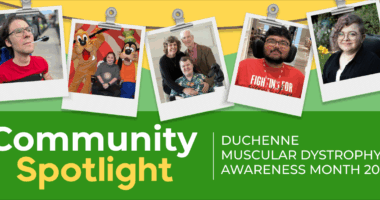When art and advocacy meet onstage
A performance at the Enabling Lives Festival in Singapore is all about connection

Last Saturday, I performed a monologue titled “Connection” at the Enabling Lives Festival here in Singapore. ART:DIS, a local nonprofit that uses the arts to support people with disabilities, organized the event as part of its BEYOND DIS:PLAY performing arts and theater mentorship program. The festival centered on a development showcase, titled “The Human Condition.”
In this setting, “development showcase” refers to an opportunity for artists in training to present early-stage works, offering audiences insight into the creative process while allowing performers to refine their craft. The project stemmed from interviews conducted eight years ago with members of Singapore’s disabled community, which a team of collaborators later shaped into scripts. The event featured 10 performances brought to life by an ensemble of 11 actors in training, including me, and five trainers.
Enabling Village, which hosted the festival, is a community space designed to promote inclusion and accessibility. It was a fitting backdrop for our mission of challenging perceptions of disability through art. Although the relaxed performances, which were inclusive, sensory-friendly, and accessible, were open to the public and described as “works in progress,” the informal atmosphere didn’t undermine the gravity of the stories we told.
Rehearsals for the show started in July and presented some unique challenges for those of us who were involved. Many of us in the ensemble live with diverse disabilities, such as hearing and visual impairments, mobility challenges, and neurodivergence. Navigating these obstacles while coordinating as a group tested our resilience, but it also highlighted the determination and adaptability that define our community.
The script I performed was deeply personal. Written by a friend who, like me, has Duchenne muscular dystrophy (DMD), it delved into themes of friendship, love, and the universal longing to leave a lasting impact in the world.
Embodying my friend’s experiences on stage was both a privilege and an emotional challenge for me, as it brought back memories of my late older brother, Isaac, who passed away five years ago from DMD complications. Performing this piece felt as if I was honoring both my friend’s and Isaac’s stories — a tribute to the challenges and joys we share as part of the Duchenne community.
The months leading up to the performance were difficult. I grappled with personal struggles that made me question my readiness to take on such a significant role. Our director was flexible, though, offering us the option of stepping back and assuming a nonacting role if necessary. But I realized it was a “now or never” moment. Living with Duchenne means that the opportunities to share our stories are limited, and I didn’t want to let this one slip away.
Despite moments of self-doubt, I persevered, and on the day of the performance, I poured my heart into every line, knowing that it was the culmination of my efforts, as well as the start of a new chapter in my advocacy journey. When I saw my friend who wrote the script smiling in the audience, I knew I’d done justice to his story. His positive feedback affirmed my decision to stay the course and reinforced the importance of telling our stories.
‘No one deserves to be forgotten’
This Saturday marks the fifth anniversary of Isaac’s death, a poignant reminder of why I continue to advocate through art. A few weeks before my performance, I attended a local production of the Broadway musical “Dear Evan Hansen” staged by Singapore’s Pangdemonium, a renowned theater company known for its thought-provoking productions that tackle contemporary social issues.
The song “Disappear” deeply resonated with me, particularly the line “No one deserves to be forgotten,” which poignantly captures my insecurities of being overlooked by others in society and my bitterness toward a society that marginalized Isaac and me as we grew older and weaker. This experience reinforced my belief in the power of art as a tool for advocacy and change.
In 2007, Isaac and I contributed artwork to a family-organized fundraiser that collected over $100,000 for the Muscular Dystrophy Association (Singapore). Yet as the years passed, I often felt like our efforts had been forgotten. The lyrics of “Disappear” reignited my determination to ensure that stories like ours endure — not just as memories, but as catalysts for change and deeper connections.
The script I performed conveyed the universal desires of those living with Duchenne: friendship, love, and an assurance that our lives have left a mark on the world. Standing on stage, I realized the performance wasn’t just about me or my friend. It was about amplifying the voices of all who have felt unseen or unheard. The stage has become my platform for honoring Isaac’s legacy and inspiring others to embrace their potential.
At its heart, the human condition is about connection — bridging the gaps between our experiences and the broader world. After all, no one deserves to be forgotten. It’s through these connections that we can truly make a difference.
Note: Muscular Dystrophy News Today is strictly a news and information website about the disease. It does not provide medical advice, diagnosis, or treatment. This content is not intended to be a substitute for professional medical advice, diagnosis, or treatment. Always seek the advice of your physician or another qualified health provider with any questions you may have regarding a medical condition. Never disregard professional medical advice or delay in seeking it because of something you have read on this website. The opinions expressed in this column are not those of Muscular Dystrophy News Today or its parent company, Bionews, and are intended to spark discussion about issues pertaining to muscular dystrophy.








Leave a comment
Fill in the required fields to post. Your email address will not be published.